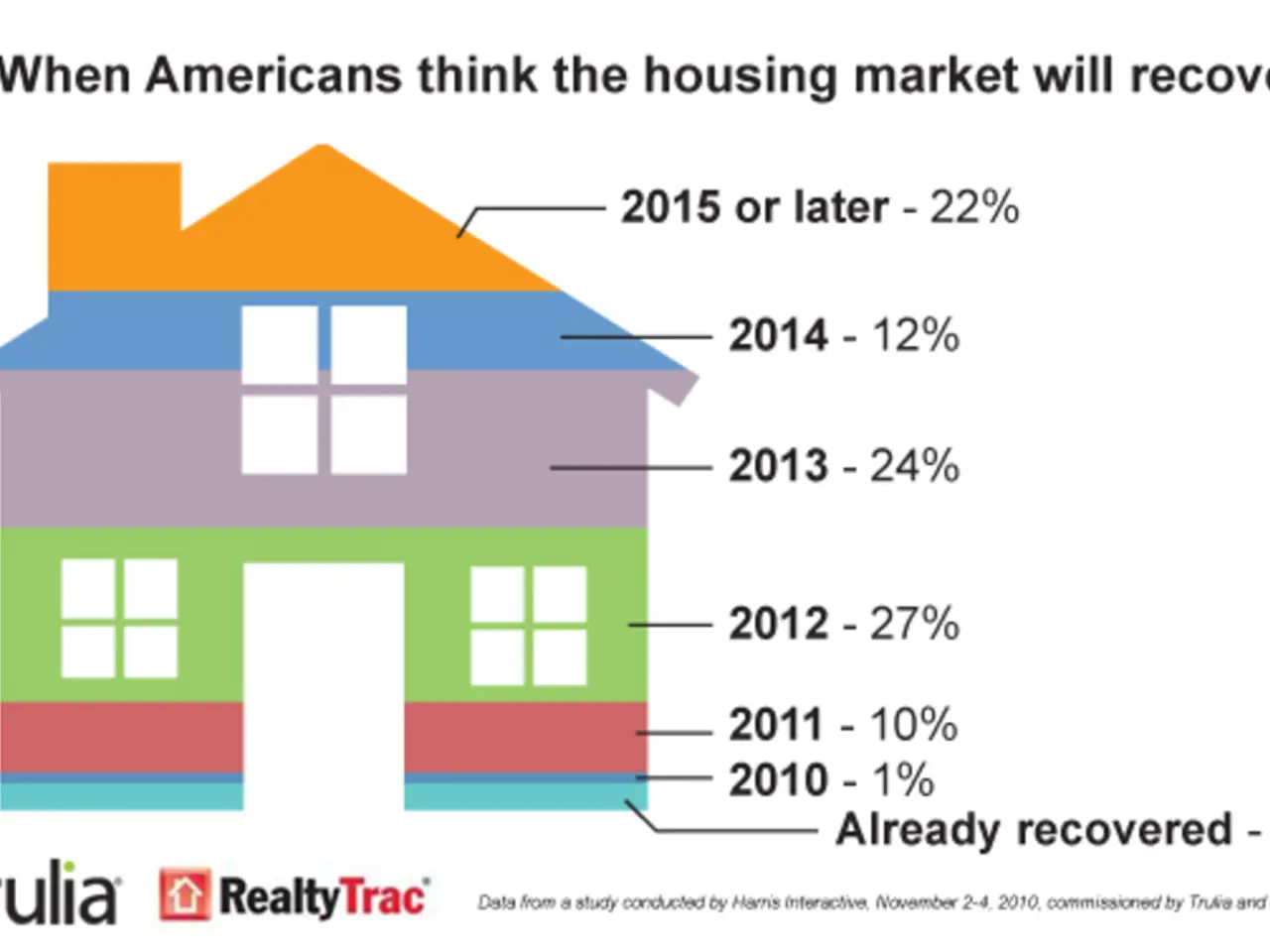Strategies for Employing Color Psychology in Your Residential Spaces
=============================================================
In the realm of home decor, color plays a significant role in creating specific atmospheres and evoking certain feelings. By understanding color psychology, we can tailor each room's ambiance to its primary function, enhancing mood and well-being.
In spaces dedicated to relaxation, such as the bedroom or living room, incorporating calming cool colors like soft blues or greens can promote restful sleep and tranquility. These colors are associated with calmness, serenity, and relaxation, making them ideal for creating a soothing environment.
When it comes to bedrooms, colors like blue, green, soft yellow, pink, silver, white, pale gray, lavender, and warm beige are recommended. These hues reduce stress and promote relaxation and sleep, making them perfect for a good night's rest. Blue and green, in particular, are effective for calmness and lowering blood pressure, while red and dark colors like black or brown are not recommended as they can stimulate alertness and hinder sleep.
Kitchens, on the other hand, benefit from colors that stimulate energy, appetite, and conversation. Red is often used for its ability to promote excitement and hunger. Warm, vibrant tones like red or orange can energize the space and enhance social interaction.
Living rooms should feature colors that create a sense of balance, peace, and connection to nature. Green and cool tones that promote calmness and relaxation are preferred, while softer blues and neutral colors can also make living rooms feel inviting and comfortable. The choice of color should also consider the size and light of the space to achieve harmony.
Home offices can benefit from colors that promote creativity, happiness, and mental stimulation. Yellow, with its ability to uplift mood and enhance creativity, is an ideal choice. Other uplifting colors can be used depending on personality and desired energy in the workspace.
To incorporate color psychology into home decor, choose paint colors, furniture, accessories, and artwork that align with the mood or atmosphere you want to create in each room, considering personal preferences and the overall aesthetic you want to achieve. Varying intensities of the same color can create depth and dimension in a room, such as using different shades of blue from light sky blue to deep navy blue.
Experimenting with different color combinations can create unique and personalized spaces. Pairing blue with orange or yellow with purple for dynamic contrasts, or using analogous colors like blue with green or red with orange for harmonious and cohesive color schemes, can result in stunning and inviting living spaces.
Furniture selection can also incorporate color psychology. Bold red sofas can add energy and excitement to living rooms, while calming blue armchairs can create a serene reading nook.
In summary, understanding color psychology is essential for creating harmonious and inviting living spaces. By choosing the right colors for each room based on their function and desired atmosphere, we can evoke specific emotions and moods, enhancing our overall well-being and creating a home that truly reflects our personalities.
| Room | Recommended Colors | Psychological Impact | |--------------|-----------------------------------------------------------|---------------------------------------------| | Bedroom | Blue, green, pale gray, lavender, warm beige, pink | Calming, restful, stress-reducing | | Kitchen | Red, orange | Stimulating, energizing, appetite-increasing| | Living Room | Green, blue tones, neutrals | Balanced, peaceful, relaxing | | Home Office | Yellow, bright uplifting colors | Creativity, happiness, mental stimulation |
These choices help tailor each room’s atmosphere to its primary function, enhancing mood and well-being by aligning color effects with room activities.
[1] Color Psychology: The Impact of Color on Human Behavior. (n.d.). Retrieved from https://www.color-affects.co.uk/
[2] The Psychology of Colour in Interior Design. (2018, April 12). Retrieved from https://www.houzz.com/
[3] The Psychology of Color in Interior Design. (n.d.). Retrieved from https://www.interiordesign.net/
[4] The Psychology of Color in Interior Design. (2018, June 27). Retrieved from https://www.architecturaldigest.com/
- In the realm of fashion and beauty, certain colors can impact one's self-perception and emotions. For instance, wearing red can evoke feelings of passion and confidence, while blues and purples can signify calmness and professionalism.
- When it comes to food and drink, color can influence our taste perceptions and choices. Bold colors like red and orange can stimulate appetite, while pastel colors may indicate lighter, more refreshing tastes.
- Home and garden spaces can also be impacted by color choices. For example, a warm color palette in a dining room can create an inviting atmosphere for celebrations and gatherings, while cool colors in a bathroom can promote relaxation and tranquility.
- In the realm of relationships, color can sometimes be symbolic. For instance, red is often associated with love and passion, while white symbolizes purity and innocence.
- Pet owners may not consider color psychology, but it can impact their pets as well. Cats, for example, might find green and blue hues calming, while dogs might be more attracted to brighter colors.
- For those planning travel, colors can influence their choices as well. Vibrant and bold colors often signify exotic destinations, while cooler, muted tones might reflect more relaxed and peaceful locations.
- When shopping for a car, color choice can also impact feelings of confidence, luxury, or sportiness. Red, black, and silver cars are often associated with power, while white and beige cars might signify a more conservative or practical approach.
- Education and self-development can also be influenced by color. For example, a bright yellow or green workspace can stimulate creativity and intellectual curiosity, while a blue or purple space might promote focus and concentration.
- For those seeking personal growth, color can play a role in setting the mood of a personal space, whether it's a meditation room painted in earthy tones to promote grounding, or a creative studio painted in vibrant blues to stimulate inspiration.
- Lastly, color can impact career development as well. A office adorned with warm and bright colors can spark creativity and boost morale, while a cooler color scheme might convey a more professional and serious atmosphere.




